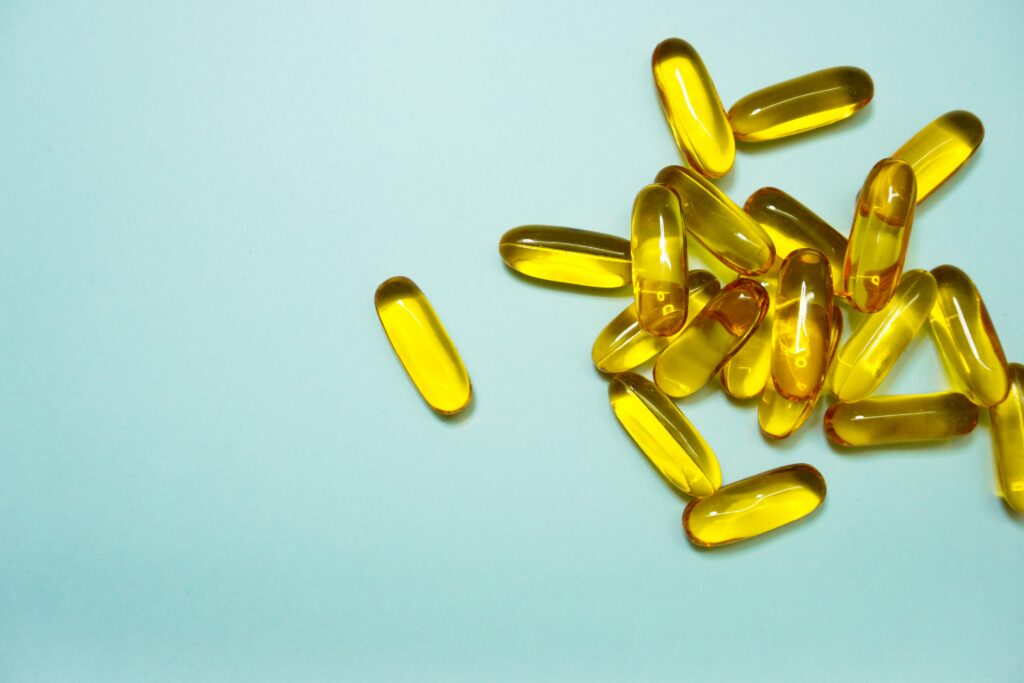Seal Oil Supplements: From Ocean to Kitchen Table
Seal oil supplements are the very best source of three natural Omega-3 essential fatty acids that are vital for the development and maintenance of a healthy human body. They contain two building blocks of cells also found in the oil of fatty fish they consume: docosahexaenoic acid (DHA), eicosapentaenoic acid (EPA) and a third polyunsaturated fatty acid docosapentaenoic acid (DPA) not found in other fish or plant oils, and is a component of human breast milk. Omega-3 concentrations found in seal oil are much higher than any other natural fish oil. The combination of Omega-3 and Omega- 6 fatty oil percentage is similar to that of humans and is absorbed by our metabolism more easily than fish oils.
Seal oil supplements are superior to fish oil because they are less prone to lipid oxidation, the chain of reactions causing degradation of lipids and loss of quality. Seal oil has anatural anti-oxidant component that makes them more stable, and provides a longer shelf life
Small wonder, then, that seal oil nutritional supplements are experiencing a surge in popularity. But how do they make the journey from the frigid ocean to your kitchen table?
Blubber
Seal oil begins from a thick pure natural fat (blubber) found in all seal species.
Seal blubber is no ordinary fat and provides special biological functions for the animal including; insulation, buoyancy, and a source of energy. It is much thicker than the fat of most land animals.
The first step in the process is the separation of the thick fat layer from the skin. This step is performed quickly through specialized equipment. Indigenous peoples that knew the full value of a seal would normally cut the fat layer off by hand.

Rendering
Blubber thickness in a seal will vary significantly as it moves between the breeding season (where it is fattest) and the leaner periods associated with molting and mating. Unlike land animals the fat melts into a liquid quickly and at lower temperatures. The approved seal oil processes apply the latest technology to quickly render (melt) and remove any solid fat particles using state-of-the-art technology. Most approved facilities use modern technology to liquify and filter the oil. Some include additional steps which may concentrate, deodorize and further cleanse the oil. Using fresh fat, the normal process produces a clear to slightly yellow oil, with a mild fishy odor. Attributes similar to other fish oils.
Omega-3 Seal Oil edible oil industry-leading quality is achieved using advanced purification techniques, Good Manufacturing Practice (GMP) standards, natural antioxidants, and a highly regulated process by the Canadian Food Inspection Agency and Health Canada. As a consumer, there are multiple suppliers of seal oil and the product is available at retail or through online sales. The product was first produced in Newfoundland and Labrador in the mid-1990s and there have been millions of satisfied customers who include the product as part of their healthy lifestyle.

Liquid or Softgels?
Depending on the consumer preference, seal oil is available as a liquid or soft gel capsule. Both products offer superior quality with the same nutritional value. There is no advantage of one over the other and it is simply a consumer preference. The liquid being the choice if you have trouble swallowing capsules.
Omega-3 seal oil high-quality standards are achieved using advanced purification techniques.
Voir cette publication sur Instagram
All secondary processing including bottle of liquid oil, production, and packaging of softgel capsules occurs in modern regulated pharmaceutical facilities. High-quality bulk oil shipped to processors throughout Canada and Asia provides finished packaging for domestic and international markets.
It may sound a bit technical, but the processing of seal oil is much simpler than fish and seed oils. Seal fat is largely pure with little protein, skin, or bone that impedes and adds steps to other Omega-3 processing. If you’ve already made the commitment to try seal oil supplements either for the first time or are a long-term user, clearly you want only the best for your body. So it’s reassuring to know that manufacturers of these supplements take them just as seriously as you do! The process is regulated from harvest to final packaging and the testimonials support a variety of documented health benefits to the customer.
Sources:
- http://canadiansealproducts.ficwebhosting.com/blog/how-do-you-know-if-you-are-lacking-omega-3s
- https://en.wikipedia.org/wiki/Lipid_peroxidation
- https://www.milkwood.net/2015/11/06/how-to-render-animal-fat-making-lard-and-tallow/
- https://www.youtube.com/watch?v=nBEZQtgAzGY
- https://en.wikipedia.org/wiki/Biomagnification
- https://www.sciencedirect.com/topics/agricultural-and-biological-sciences/blubber
- https://en.wikipedia.org/wiki/Molecular_distillation
- https://shop.canadiansealproducts.com/product-category/omega-3-supplement/
- https://en.wikipedia.org/wiki/Softgel



